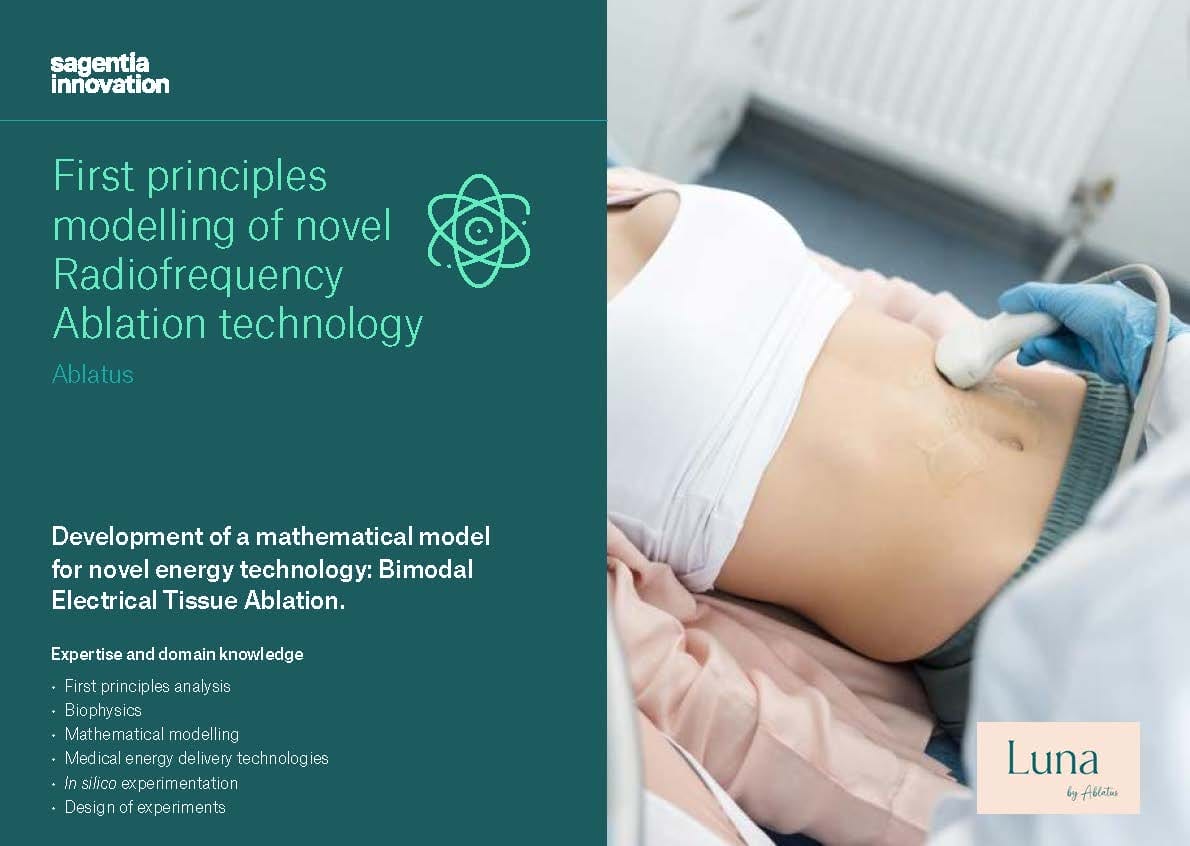Ablatus: First principles modelling of novel Radiofrequency Ablation technology
Development of a mathematical model for novel energy technology: Bimodal Electrical Tissue Ablation.
Our client asked:
Ablatus approached us with the objective of developing a mathematical model of their novel energy technology: Bimodal Electrical Tissue Ablation (BETA). BETA is an enhanced form of radiofrequency ablation (RFA), intended for in situ soft tissue destruction. A Direct Current (DC) field is superimposed on the Alternating Current (AC) field used to generate standard radiofrequency (RF). Ablatus wanted the model to better BETA’s principles of operation so it can be better exploited through optimisation of its control parameters.
RF deposits heat in the target tissue leading to its ablation, but also desiccation. The DC field exploits the physics of electro-osmosis to keep the tissue well-hydrated, providing either (1) shorter ablation times or (2) larger ablation sizes. Whilst RFA is a well-characterised energy delivery approach, the electro-osmosis-driven tissue hydration is not, which has limited Ablatus’ ability to accurately predict treatment outcomes and fine-tune BETA’s performance.
The project story:
We took a first principles approach, reviewing the core physics of electro-osmosis to determine how these would de facto apply in the context of biological tissues. A set of partial differential equations were produced to formally and rigorously define the mechanisms at play. The proposed mathematical model was combined with a standard RF model in a commercial modelling software package, and a full-fledged model of BETA technology was developed.
The BETA model was first successfully validated against experimental data provided by Ablatus. This was followed by a sensitivity analysis which highlighted: (1) the system inputs that could be utilised to fine-tune BETA’s performance and; (2) the tissue properties that could influence its efficacy.
Finally, the model was also used to provide predictions on the expected BETA performance for a range of target tissue of interest, thus capitalising on the ability to undertake fast and controlled in silico experimentation.
Results: deliverables and outcomes
Ablatus obtained a first of its kind, validated, mathematical model for its BETA technology. This tool was critical for: (1) the understanding of the core principles underlining the technology; (2) identifying the inputs most critical for treatment development, and; (3) characterising the tissues
in which the technology will likely be most effective. Ablatus is now in a stronger position to refine the development of its novel BETA technology to empower Luna – a minimally-invasive treatment for uterine fibroids that is incisionless and fertility-preserving.

